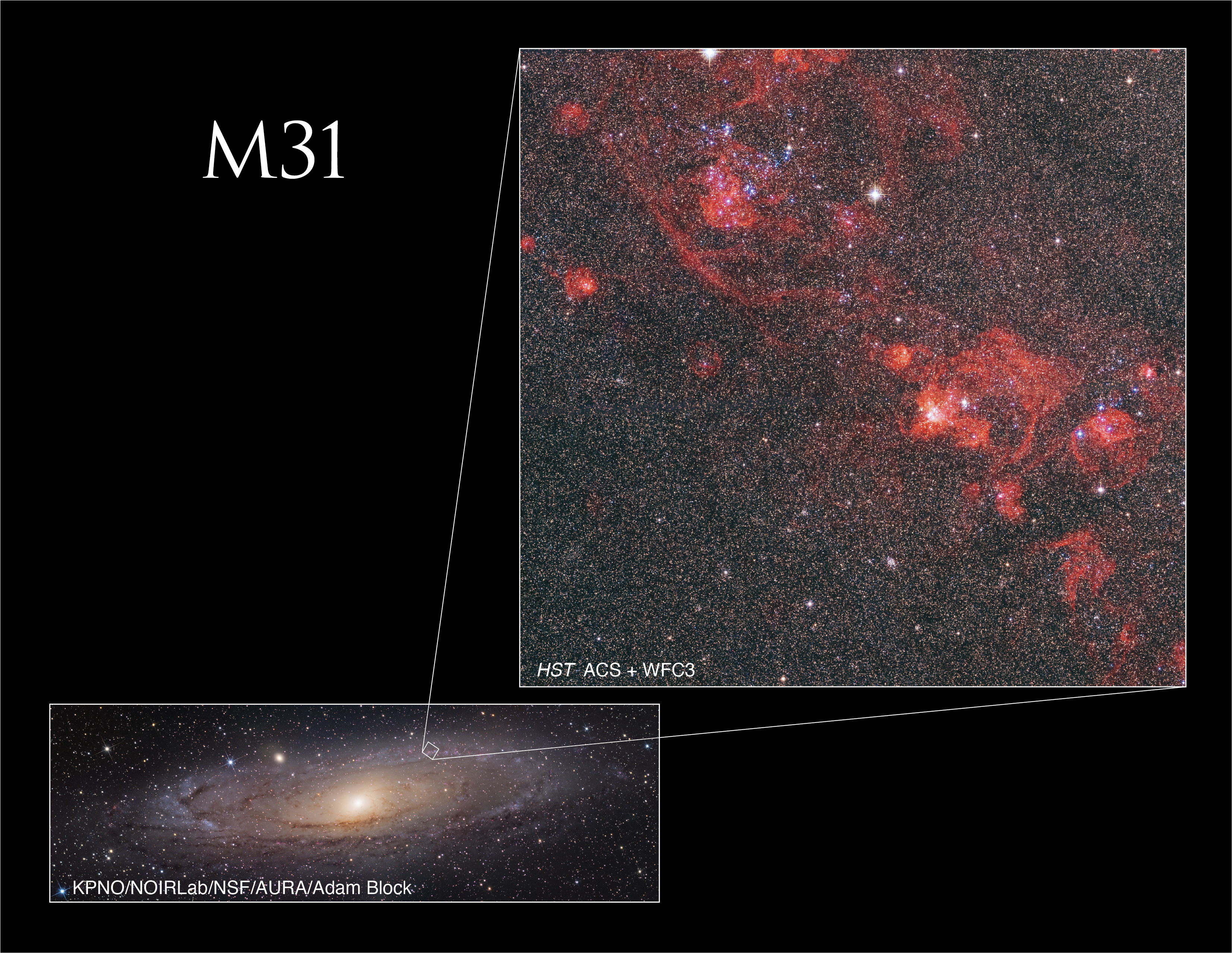
Also known as M31, Andromeda is the Milky Way’s closest major galaxy, measuring roughly 152,000 light years across, with almost the same mass as our home galaxy.
The younger James Webb Space Telescope (JWST) often gets all the glory, however, the 34 year old Hubble Space Telescope is still making incredible discoveries, changing our understanding of space.
As a spiral galaxy, Andromeda’s long tendril-like winding arms are one of its most remarkable features, and at 2.5 million light years away from Earth, it’s the most distant object that can be seen with the naked eye.
To get a clear view of the Andromeda galaxy you’ll need the best telescope for astrophotography, or take your own images with the best camera for astrophotography.
August and September are the best months to see it, as the galaxy is highest in the sky during these months.
Now, using the Hubble Telescope, scientists have probed one of its tendrils in the northeast, revealing swathes of ionized gas.

According to NASA:
“These regions — which are common in spiral and irregular galaxies — often indicate the presence of recent star formation. The combination of stellar nurseries and supernovae create a dynamic environment that excites the surrounding hydrogen gas, flourishing it into a garden of star-studded roses.”
The stunning crimson bouquets were visible in such beautiful clarity due to the Hubble’s Advanced Camera for Surveys (ACS) and Wild Field Camera 3 (WFC3), allowing scientists to analyze the collection of stars buried within the cosmic bunches.
With ACS and WFC3’s wide spectral coverage, Hubble is able to peer through the hedges of gas and take a look at a huge sample of stars, providing not just a clear view of Andromeda’s stellar history and diversity.
The images all offer a deeper insight into stellar formation and evolution, and NASA adds:
“By examining these stars in our local cosmic neighborhood, scientists can better understand those within galaxies in the distant universe.”
Check out our guide to the best cameras for astrophotography, and the best lenses to capture the night sky.
We've also got all the information you need about what to the what what there is to see in the sky this month in our guide to astrophotography in September 2024







